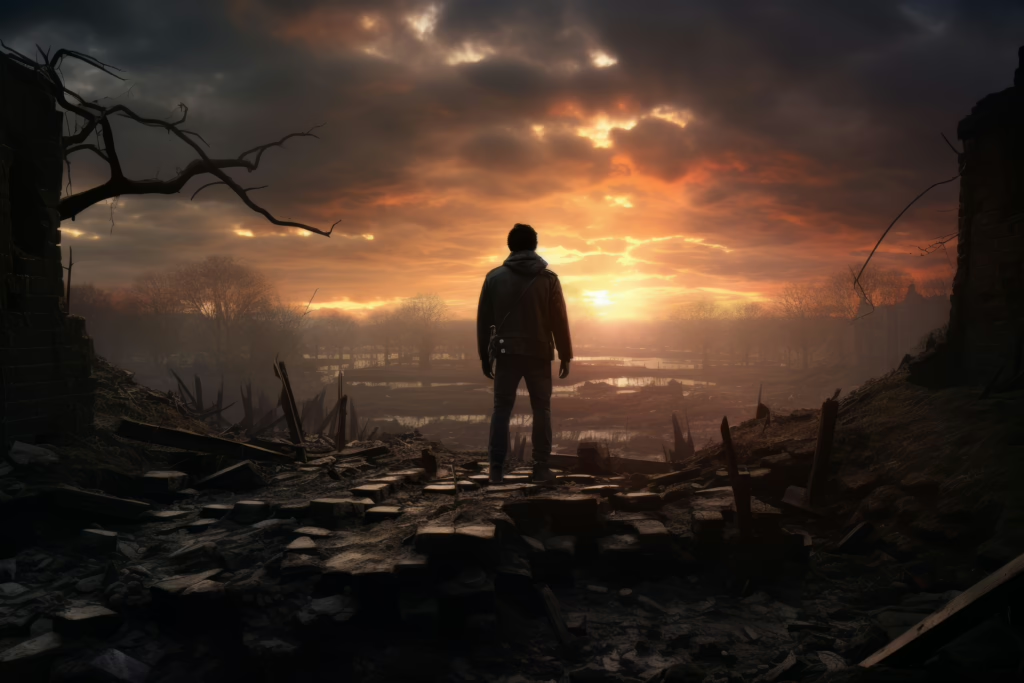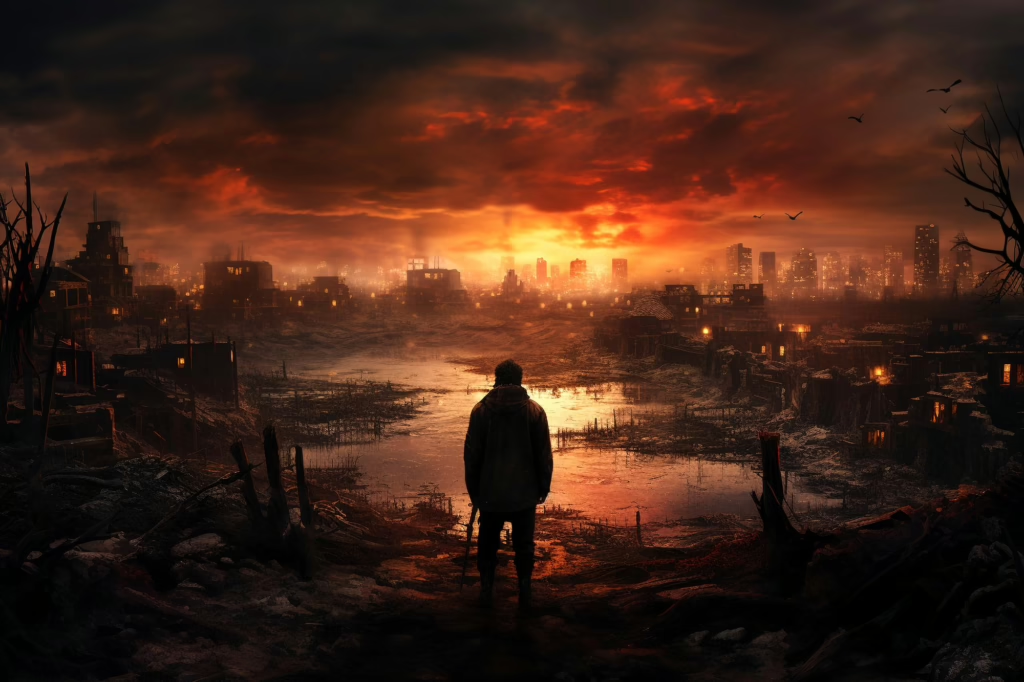T. S. Eliot’s The Waste Land, published in 1922, is widely acknowledged as one of the most iconic and groundbreaking poems of the twentieth century. It stands as the definitive modernist poem, a powerful and layered exploration of disillusionment, fragmentation, and cultural despair in the aftermath of World War I. To read The Waste Land is to confront a text that reflects not only the psychological trauma of an individual but also the spiritual malaise of an entire civilization.
Composed during a time of personal crisis for Eliot—marked by marital difficulties, mental exhaustion, and physical breakdown—the poem mirrors both his internal disintegration and the greater cultural collapse he witnessed in post-war Europe. Its brilliance lies in how it fuses the deeply personal with the unmistakably universal, combining ancient mythology with contemporary modern life, spiritual symbolism with social critique, and Eastern philosophy with Western literature. Rather than offering a cohesive narrative, Eliot presents a fractured, kaleidoscopic vision of modern existence that is at once deeply unsettling and uncannily prophetic.

Publication History and Critical Context
The Waste Land was first published in the October 1922 issue of The Criterion, a literary magazine founded and edited by Eliot himself. A month later, it appeared in The Dial, a prominent American journal, and was subsequently published as a stand-alone book by Boni & Liveright in New York. The poem was heavily edited by Ezra Pound, who played a crucial role in shaping its final form. In gratitude, Eliot famously dedicated the poem to him as “il miglior fabbro” (“the better craftsman”), a line borrowed from Dante’s Purgatorio.
The world in which the poem emerged was still reeling from the horrors of the First World War (1914–1918), an unprecedented conflict that left millions dead and exposed the hollowness of Enlightenment ideals. The age of reason, order, and progress had given way to disillusionment, instability, and chaos. Against this backdrop, The Waste Land captured the emotional, psychological, and cultural vacuum of modern Western life with staggering precision.
Structure and Form: Fragments Shored Against Ruin
The Waste Land is not a conventional poem; it is a literary mosaic, composed of five sections:
- The Burial of the Dead – Introduces the themes of sterility, disconnection, and disillusionment, blending seasonal imagery with prophetic voices.
- A Game of Chess – Centers around themes of sexual tension, domestic unrest, and existential futility, featuring decadent and decaying interiors.
- The Fire Sermon – Focuses on moral and physical decay, narrated by the blind prophet Tiresias, and incorporates classical myth with sordid modernity.
- Death by Water – A brief but significant section that allegorizes the destruction and cleansing power of water.
- What the Thunder Said – Moves toward a climactic vision of apocalypse, suffering, and possible redemption, concluding with echoes of Eastern philosophy.
The poem’s fragmented structure reflects the fractured state of the post-war consciousness. There is no linear narrative or stable speaker. Instead, the poem shifts between voices, languages, times, and settings—jumping from ancient Egypt to Victorian London, from Christian liturgy to Buddhist scripture, from the myth of the Fisher King to the chatter of London commuters. This collage technique, drawn from avant-garde art movements like Cubism and Dadaism, creates a disorienting yet deeply symbolic texture.
Key Themes and Motifs
1. Spiritual Barreness and Cultural Decay
The central metaphor of The Waste Land is of a world that is spiritually barren and culturally sterile. The “waste land” is not just a physical desert, but a symbolic representation of a civilization that has lost touch with its roots—religious, moral, and artistic. The poem references the Fisher King legend, wherein the king’s impotence is mirrored in the land’s infertility. Eliot uses this myth to suggest that the modern world, too, suffers from a loss of vitality and spiritual sterility.
2. Disillusionment after the War
The trauma of World War I looms in the background, casting a long shadow over the poem. Eliot never describes the war directly but evokes its emotional aftermath—the numbness, the broken identities, the sense of futility and waste. The dead walking the streets, the fragmented voices, and the apocalyptic imagery all speak to a world that no longer believes in order or transcendence.
3. Fragmentation and Modern Identity
The poem’s multiplicity of voices and allusions reflects the fragmentation of identity in the modern era. There is no single narrator, no unified self. Instead, the text is a chorus of partial, often contradictory voices—male and female, ancient and modern, sacred and profane. This stylistic fragmentation mirrors the disintegration of coherent personal and collective identity in the 20th century.
4. The Crisis of Language and Communication
Language in The Waste Land is often incoherent, broken, or filled with ironic detachment. Eliot expresses skepticism about the ability of language to convey meaning or truth in a shattered world. The poem is filled with echoes of lost cultures—snippets from Dante, Shakespeare, Ovid, Baudelaire, and Eastern scriptures—all suggesting a yearning for a past that can no longer offer guidance.
5. Redemption and Renewal
Despite its bleakness, the poem is not without hope. In its final section, Eliot introduces the concept of redemptive suffering, drawing on Eastern and Western spiritual traditions. The thunder’s pronouncement—“Datta. Dayadhvam. Damyata.” (Give. Sympathize. Control.)—taken from the Brihadaranyaka Upanishad, offers a spiritual path forward. The poem ends with the invocation “Shantih shantih shantih”, a Sanskrit benediction meaning “the peace which passeth understanding,” suggesting the possibility, however remote, of spiritual renewal.
Allusions and Intertextuality
The Waste Land is densely packed with literary, mythological, historical, and religious allusions, requiring an informed reader to unpack its many meanings. Some major sources include:
- The Bible: Ezekiel, Isaiah, Ecclesiastes, and Revelation are invoked to underscore spiritual decay and judgment.
- Greek mythology: Tiresias, the blind prophet who has lived as both man and woman, becomes a unifying figure and witness to modern moral decay.
- Shakespeare: The Tempest, Hamlet, Antony and Cleopatra, and King Lear provide language and imagery for love, madness, and betrayal.
- Eastern texts: The Upanishads and Buddhist teachings offer alternatives to Western spiritual exhaustion.
- Contemporary references: From popular songs to London street scenes, Eliot also captures the trivialities and absurdities of modern urban life.
This intertextual web is not simply ornamental; it’s Eliot’s method of showing that modern consciousness is haunted by fragments of the past—glorious yet now meaningless.
A Modernist Masterpiece
The Waste Land is the quintessential modernist text, characterized by:
- Elitist intertextuality: demanding wide-ranging literary knowledge from the reader.
- Experimental form: abandoning traditional meter and structure.
- Juxtaposition: rapidly shifting images, styles, and voices.
- Pessimism and irony: reflecting post-war existential despair.
- Urban alienation: especially focused on the rootlessness and sterility of city life.
Eliot’s work also helped legitimize Modernism as a major literary movement, pushing poetry into new intellectual and emotional territories. By embracing fragmentation, myth, and philosophical ambiguity, he expanded the limits of what poetry could achieve.
Legacy and Impact
The publication of The Waste Land sent shockwaves through the literary world. Critics were divided—some praised its innovation, while others found it obscure or even pretentious. Over time, however, the poem gained almost mythic status. It is now considered essential reading for students of literature, philosophy, and cultural history. Its lines—like “April is the cruellest month”—have entered the canon of the English language.
Eliot went on to win the Nobel Prize in Literature in 1948, and The Waste Land remains his most influential and studied work. It has been interpreted through countless lenses—psychoanalytic, feminist, postcolonial, Marxist, and theological—testifying to its enduring richness and complexity.

Conclusion: A Mirror to the Modern Soul
The Waste Land is not a poem that yields easily to understanding. It resists paraphrase, defies singular interpretation, and often frustrates casual readers. Yet, its power lies precisely in its difficulty—it forces readers to confront the uncertainties of the modern world, to question the values of civilization, and to engage in a spiritual and intellectual struggle.
T. S. Eliot’s haunting vision of a “heap of broken images” is not merely a reflection of a broken world—it is an invitation to reassemble those fragments into meaning, to find peace amidst chaos, and to search for redemption in a seemingly desolate landscape. Through its complexity and brilliance, The Waste Land endures not just as a monument of modernism, but as a spiritual and cultural mirror of modern humanity.

